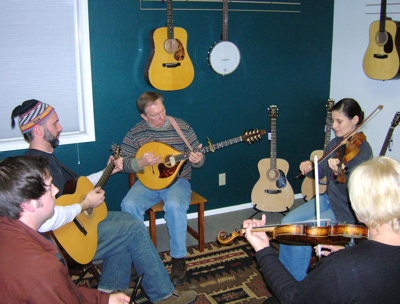A frequent question from parents is whether to start children on electric guitars or acoustic guitars. Most kids interested in playing rock will obviously want an electric guitar, but there is a widespread idea that it is somehow better for them to start with a “regular” guitar.
I have no idea where this idea started. Acoustic guitars are generally much more difficult for beginners. They’re harder to hold because they’re bigger and wider, and harder to make notes and chords on because the strings are farther from the fingerboard and under more tension. Electric guitars are simply easier to play, and if a child wants to play rock styles there is no way to get a rock sound from an acoustic guitar.
So my recommendation to parents is always to consider what sort of music their child listens to and wants to play. If you’ve got a daughter infatuated with Taylor Swift who wants to strum chords and sing modern country music, she’ll want an acoustic guitar and will be inspired to overcome its initial awkwardness. If you’ve got a son into metal or classic rock, there’s absolutely no reason not to start with whatever electric guitar he thinks looks coolest. Self-motivation is the most important factor in musical success, so shop with an eye for whatever guitar your child seems most excited about spending time with.
In terms of cost, there is very little difference. A small amplifier loud enough for any house can be purchased for less than $100, and both electric and acoustic guitars are available in serviceable models for less than $200. These aren’t instruments that would satisfy an advancing player, but they’re a lot better than the first couple of guitars I learned on.
Finally, be very careful about buying used guitars unless you’re an experienced player. I have no reservation about recommending used digital pianos from pawn shops or Craigslist because electronic devices made of plastic are much less prone to damage from temperature and humidity changes. And trying them out is very simple – they either work or they don’t. Guitars, being made of thin woods, are much more fickle, and any guitar that’s been sitting unplayed for awhile is likely to have repair issues that wouldn’t be evident to a beginner. Guitars bought new will often require minor adjustments after a few weeks also, but that’s a service most stores will provide as part of the purchase.





{ 0 comments… add one now }
You must log in to post a comment.